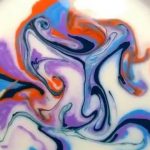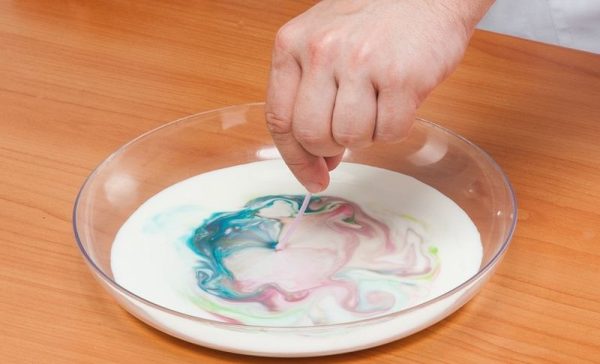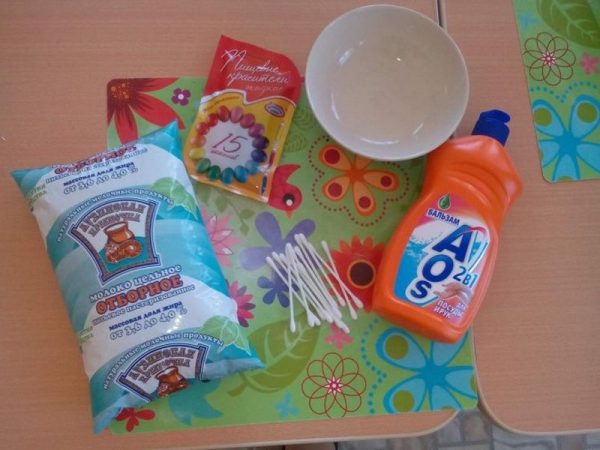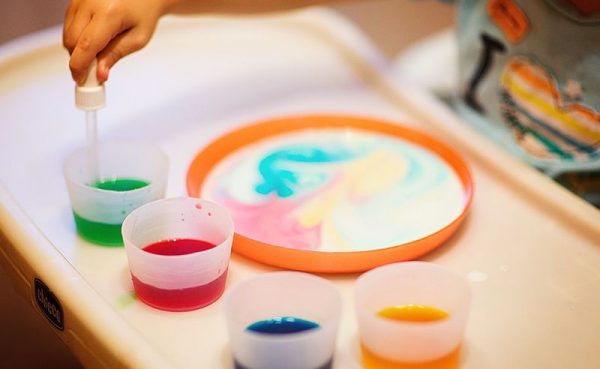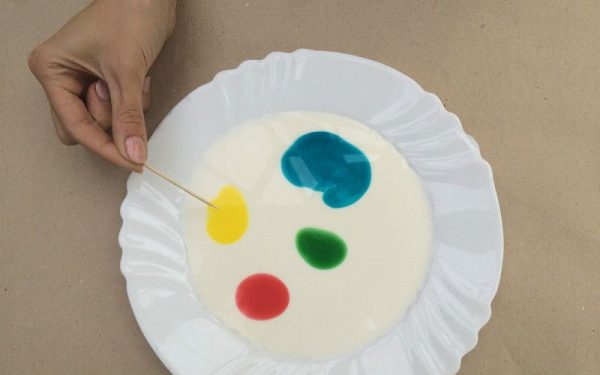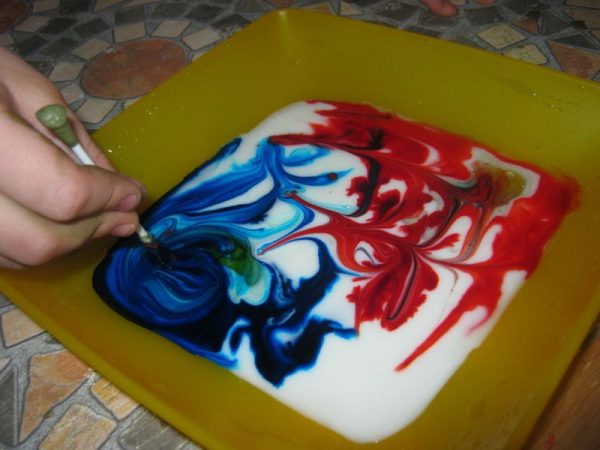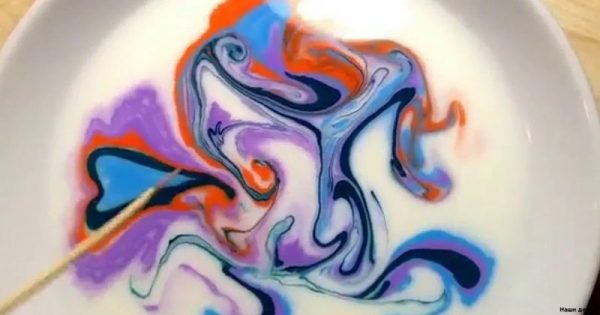Creative classes are required for the full development of a growing child. Drawing is considered the most popular form of children's entertainment, while all kids enjoy it, regardless of age or other preferences.
There is an interesting type of "painting" - drawing on milk, which requires a minimum of labor, while literally bordering on magic, so it does not leave anyone indifferent.
to contents ↑Necessary fixtures and materials
To make a real explosion of colors in milk, you need to prepare the basis in advance - high fat milk, as well as other means:
- various food or other dyes (the ideal option is pigments from the Easter set);
- dishwashing detergent (liquid soap is also suitable);
- cotton buds;
- soup plastic plate;
- dropper;
- small plastic cups.
Operating procedure
Everyone can draw with dyes on milk; experience is not required. The procedure is as follows:
- Pour milk into a plate, completely covering the bottom. The base must have room temperature, so you need to let it stand or immediately warm up a little.
- Dilute dry pigments with water. If they are in liquid form, you can simply pour the dye of each shade into a separate cup.
- Pipette a little any dye with a pipette, drop into milk. Repeat manipulations with pigments of other shades.
- Use a cotton swab to touch the milk a little, but do not mix the ingredients. The picture will not change, what you need to pay attention to the baby.
- Moisten a cotton swab with dishwashing liquid, easily touch the surface of the milk without stirring or other movements. Hold the wand for 5-10 seconds.
Experiment result
After the contact of soapy liquid and milk, the paints begin to move like an explosion - bright colors “scatter” from a cotton swab, which looks very impressive. Usually such "magic" delights children, especially since after removing the sticks the paints continue their movement. As you add new portions of pigments, you can create whole pictures, interesting patterns, fancy drawings.
to contents ↑
The secret of experience
Milk has a complex chemical composition - there is casein, milk sugar, vitamins and other components. There is a lot of fat in milk, which is present in the form of an emulsion - dispersed inclusions float in a liquid carrier medium. These tiny fat globules are quite sensitive to a change in solution, and when they come into contact with surfactants, soaps change their structure.
The chemical bonds that hold the fat molecules are weakened, the surface tension is reduced. Fat particles are repelled from each other, as a result, the colored portion of the liquid "spreads" to the sides. As the detergent mixes with milk, the reaction subsides, then completely stops.
If you experiment with cream, the effect will be even more pronounced.By changing the base or mixing the tones, you can “draw” an endless number of patterns on milk. It is recommended to capture the results in the photo, so that later they can discuss them with interest with children - this will make joint leisure even more fun!

